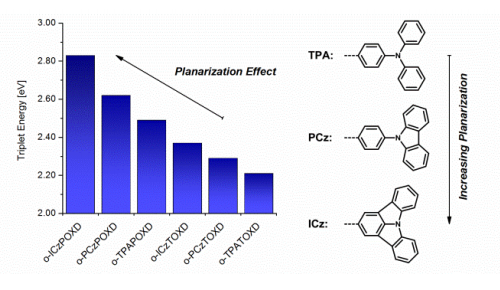-
Towards efficient initiators for two-photon induced polymerization: fine tuning of the donor/acceptor properties
B. Holzer, M. Lunzer, A. Rosspeintner, G. Licari, M. Tromayer, S. Naumov, D. Lumpi, E. Horkel, C. Hametner, A. Ovsianikov, R. Liska, E. Vauthey and J. Fröhlich
Mol. Sys. Des. Eng., 4 (2019), p437-448


DOI:10.1039/C8ME00101D | unige:126822 | Abstract | Article HTML | Article PDF | Supporting Info
In this work we present the design, synthesis and systematic investigation of the optical properties of symmetric triphenylamine (TPA)-substituted thiophenes. The use of electron-donating (-OMe, -tBu, -Me, -TMS), -neutral (-H) or -withdrawing (-F, -CN, -SO2Me) substituents gives rise to D-A-D based two-photon absorption (2PA) chromophores. The photophysical properties of these compounds, including one-photon absorption and 2PA using two-photon-excited fluorescence, were investigated in different organic solvents with varying polarity. The maximum 2PA cross sections prove to be strongly dependent on the nature of the TPA substituent and range between ca. 173 GM (Goeppert-Mayer units) and 379 GM. Although most of the investigated substances also exhibit high fluorescence quantum yields, two-photon absorption screening tests of an acrylate monomer formulation revealed the efficiency of these materials as 2PA photoinitiators. These results are supported by quantum chemical calculations of the spin density distribution indicating that the mechanism of polymerization initiation using acrylate monomer is favored by strong localization of the unpaired electrons in the triplet state on the C2 carbon of the thiophene moiety.


